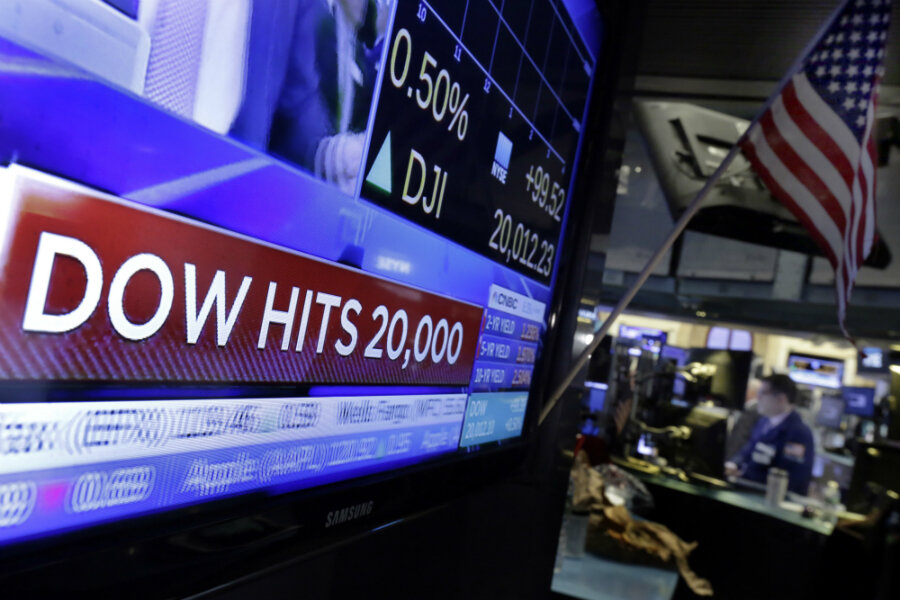Tips from a financial planner on how to manage your investments during Trump presidency
Loading...
Learn more Adam on NerdWallet’s Ask an Advisor.
As we head into the first year of the Donald Trump administration, predictions for capital markets are running amok. Here are a few of the predictions you may be hearing, as well as some practical suggestions to help you stay the course while negotiating the new landscape.
Prediction No. 1: The financial sector will outperform the broader market
The financial sector has been on a major run-up since the election, as banks’ growing financial strength, improved consumer finances and a reduced regulatory burden all look to favor financials. Right?
Well, it’s not quite that simple.
Investors would do well to remember that prices are driven by the economics of supply and demand, and the price of a stock or sector today reflects the combined expectations of all market participants. Simply put, if everyone expects that the price of a stock will rise by 10% in one month, everyone will want to own that stock right now, and that demand should cause the price to rise by 10% today. Therefore, short-term forecasting strategies like this are difficult — and impractical — to implement.
TIP NO. 1: DIVERSIFY
Rather than trying to forecast sector returns, if investors want to shift their energy to things they can control, diversification should be near the top of their list. Modern investment vehicles allow investors to own thousands of securities across and within asset classes, asset categories, geographical regions and so on. Limiting a portfolio’s concentration in any one asset class may keep investors from hitting an unlikely home run, but it should also decrease their chances of striking out.
Further, President Trump’s use of Twitter to single out individual companies represents an expansion of “non-market risk,” or individual business risk, that can be mitigated by being in diversified funds rather than individual stock positions.
Prediction No. 2: Fiscal stimulus will propel the U.S. stock market
One of the potentially fastest ways to grow the economy would be for the government to spend money on infrastructure; Trump has proposed spending $550 billion to do just that. When weighing such a proposal against your investment decisions, keep in mind that expectations of future events are often likely to be already reflected in prices today.
TIP NO. 2: DON’T LET EMOTIONS DRIVE INVESTMENTS
Behavioral finance research suggests that when grandiose results are expected, that’s often when the most risk is present, and when things seem to be in the worst shape, that may be when the most opportunity exists. While it’s impossible to tell where we — and the rest of the market — are on this spectrum at any given time, we can gain some insight from taking our own temperature on the matter.
If this election season has taught us one thing, it’s that President Trump can incite a flurry of emotional reactions from both his supporters and his opposition, and this emotion has the potential to materialize within market prices.
Prediction No. 3: A geopolitical event will impact markets
The Trump presidency introduces an unprecedented approach to global diplomacy, and some believe that this points to the possibility of a major market shock. Many recognize that the sheer unpredictability of unknowable actions is fraught with risk.
TIP NO. 3: BUILD A PLAN FOR VOLATILITY BEFORE IT HITS
Since we know it’s impossible to predict if or when a decline may occur, it’s important to plan ahead for how you’ll react should it happen. Luckily, there are sensible methods for dealing with volatility, including tax-loss harvesting, Roth IRA conversions and a threshold-based approach to rebalancing.
Keep in mind that not all markets move in tandem with one another, and diversification may help smooth the impact of unexpected events.
The bottom line
Every year brings surprises. Take 2016, for example: Who would have imagined that 2016 would see both the Chicago Cubs and the Cleveland Cavaliers end their cities’ championship droughts, Bob Dylan win the Nobel Prize in literature, Donald Trump be elected president and the Dow Jones industrial average close out the year a sliver away from 20,000? The answer is nobody.
Predictions about future price movements come in all shapes and sizes, but most of them tempt the investor into playing a game of outguessing the market. The savvy investor will avoid those temptations.
Adam Harding is founder and lead advisor at Adam C. Harding, CFP in Scottsdale, Arizona.
This story originally appeared on NerdWallet.





